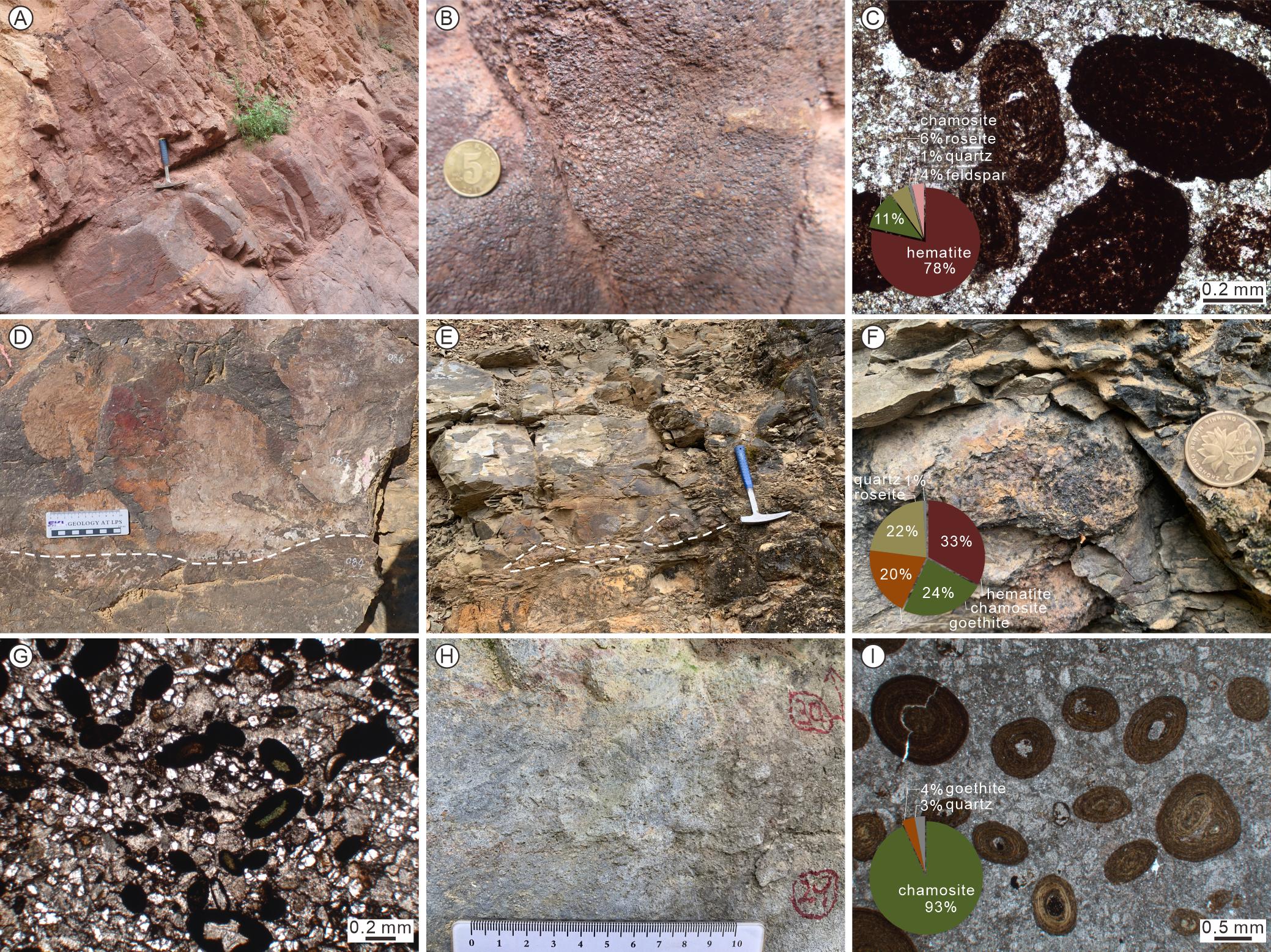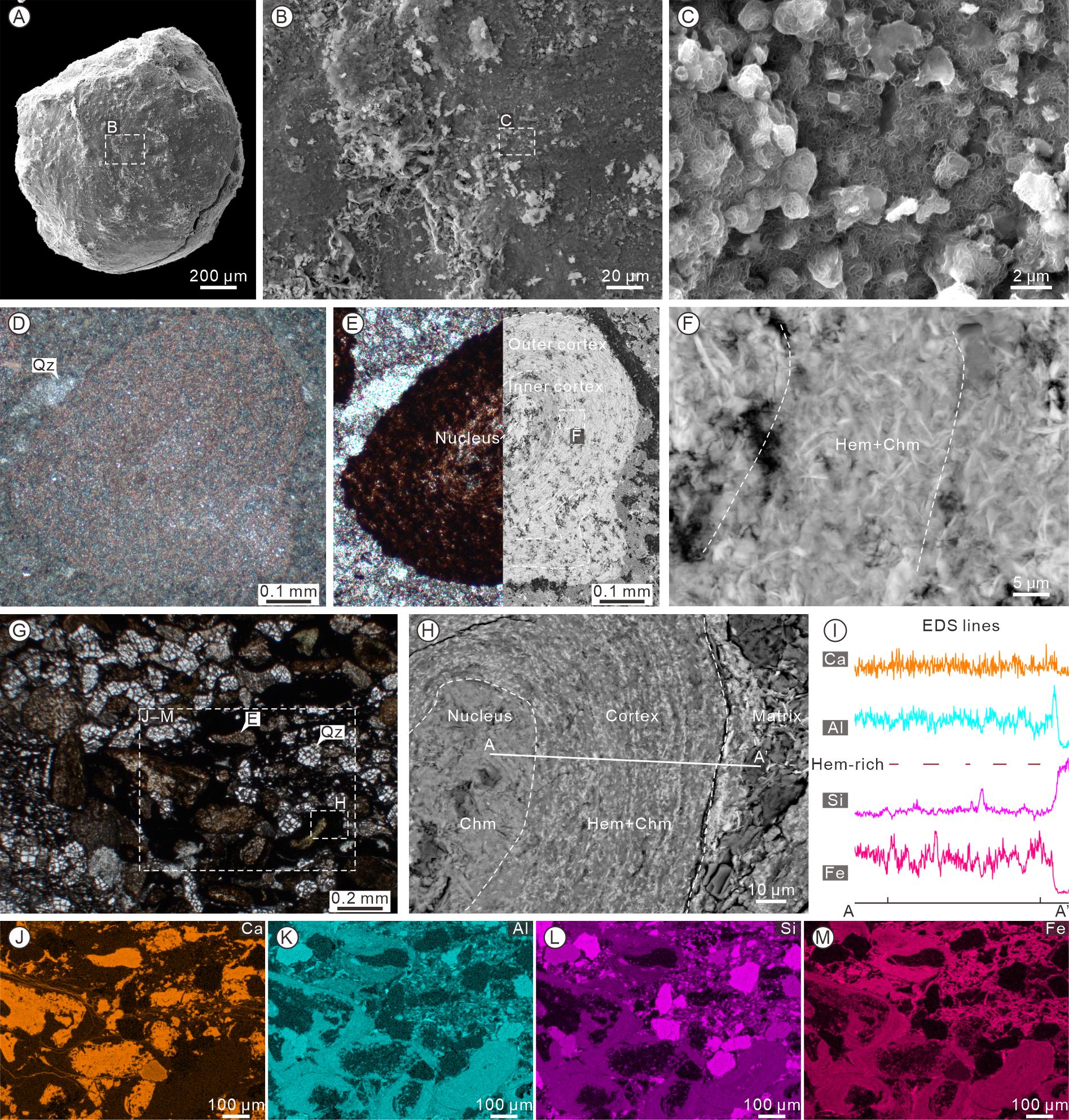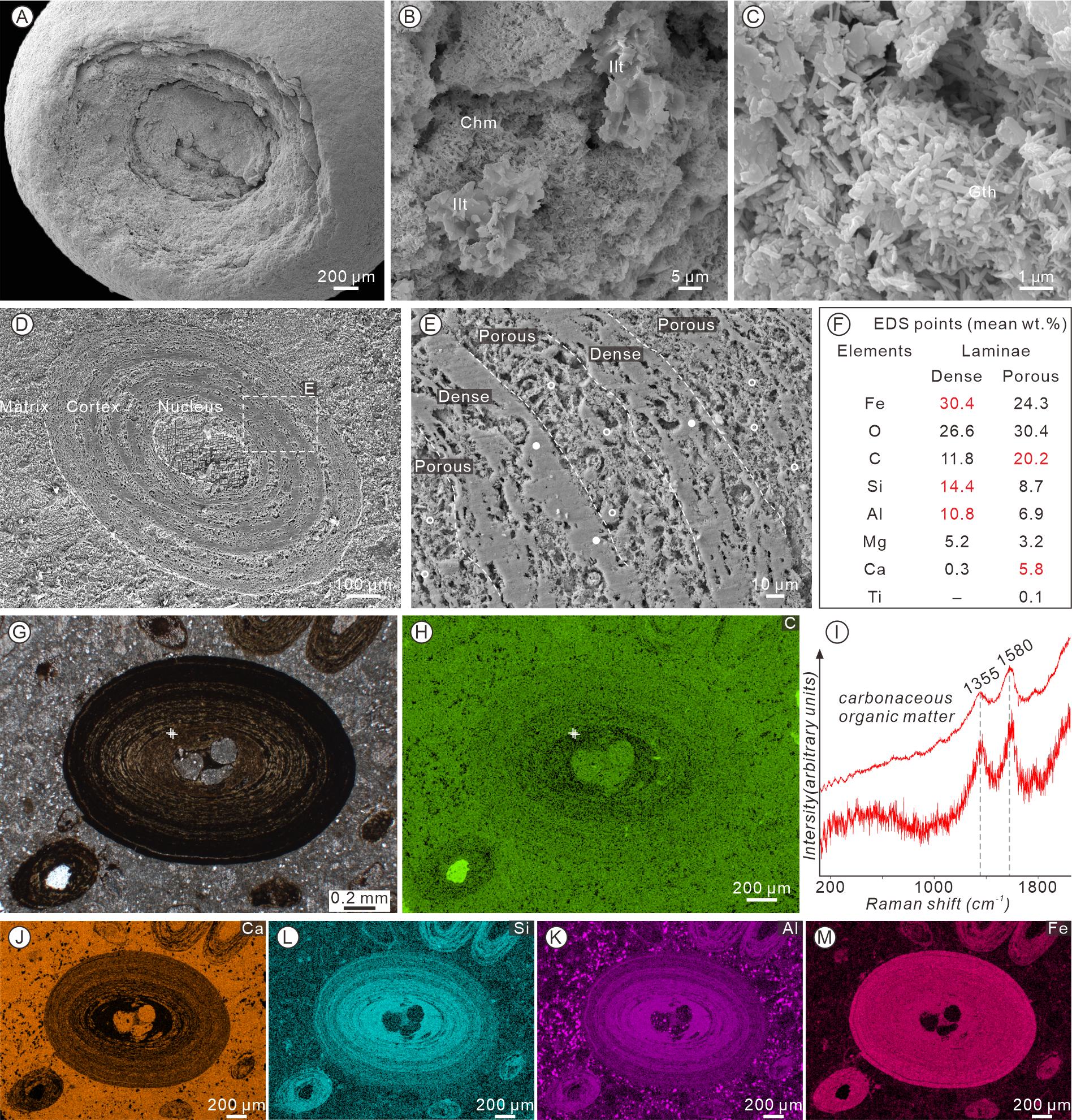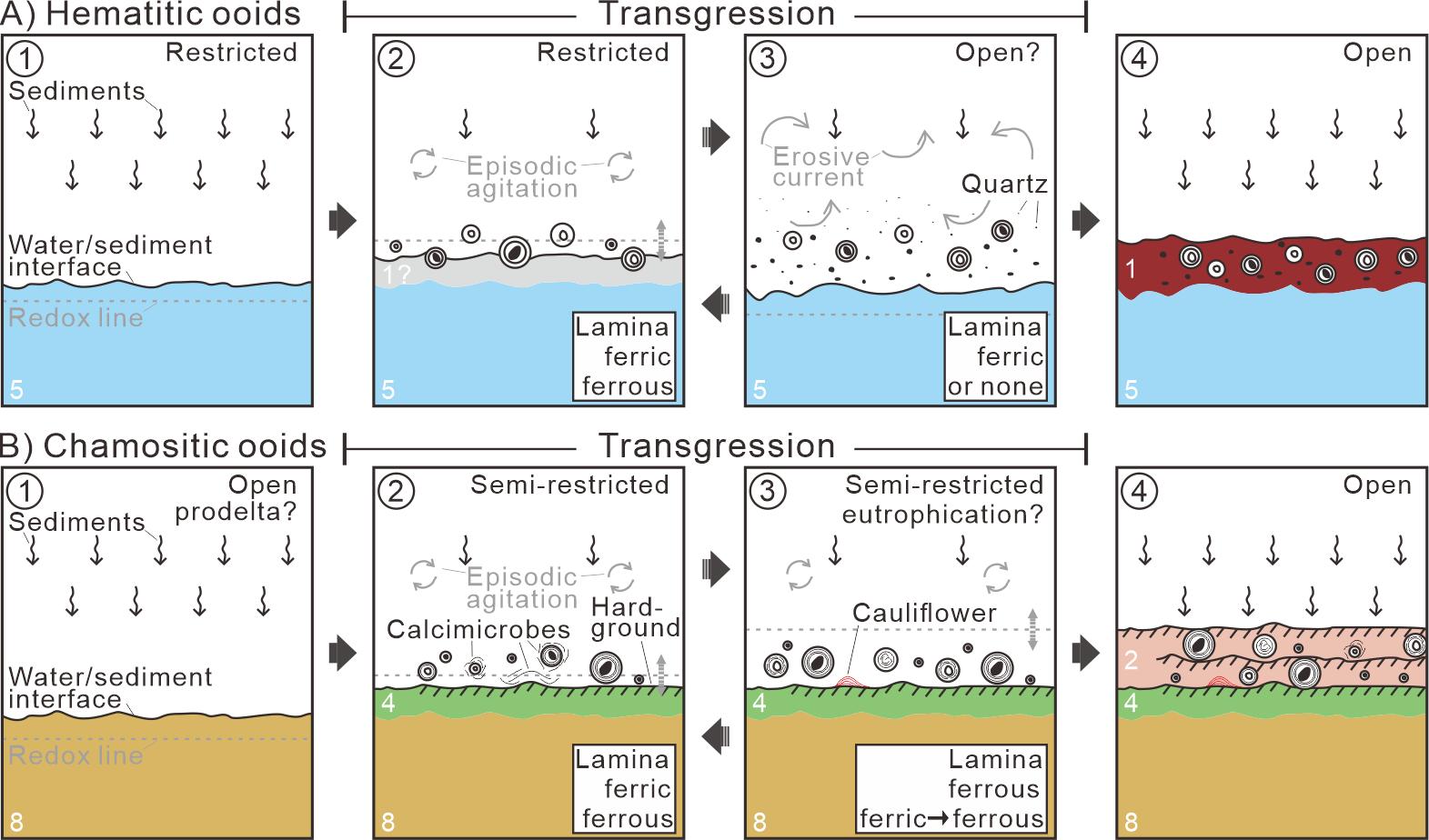Recently, Dr. LUAN Xiaocong and Prof. ZHAN Renbin from Nanjing Institute of Geology and Palaeontology, Chinese Academy of Sciences (NIGPAS), in collaboration with colleagues from University of Saskatchewan and Western University, Canada, have examined these iron ooids through extensive field surveys and in-depth sedimentological and geochemical analyses on various iron-bearing successions and iron ooids across different regions on the Upper Yangtze region, South China. Related results have been published in Journal of Stratigraphy (in Chinese with English abstract) and Sedimentology, respectively.
Iron ooids are the most characteristic components of ferruginous deposits such as ooidal ironstone and iron formation (iron content > 15wt%), and also develope in carbonate and siliciclastic rocks.
During the late Middle Ordovician, iron ooids widely developed in northeastern Yunnan, southern Sichuan, northern Guizhou, southern Shaanxi and northern Sichuan of South China, occurring in the forms of lenticular or layered sandstone, siltstone, and limestone, forming the “Ningnan”-type iron ore in the most enriched Ningnan area. The well exposure and diversified lithology of these iron ooids provide a unique insight into their origins.
The studies reveal that iron ooids are mainly of the middle-late Darriwilian (Middle Ordovician), and the Middle-Upper Ordovician Huadan and Shihtzupu formations are major iron ooids-bearing units in the Upper Yangtze region. The depositional environment was mosaic shallow water setting, consisting of restricted/semi-restricted lagoon and open-marine subtidal and shoreface zones.
There is paleogeography-related mineral differentiation in these iron ooids. The iron ooids distributed in western area are characterized by hematite, while in the eastern distribution area, chamosite becomes the dominant mineral.
Both types of iron ooids are resulted from transgression and the mineral differentiation are driven by different depositional processes. Hematitic ooids formed in the transgressive shoal setting when the depositional environments changed from restricted lagoon to bioclast–quartz shoal and open marine subtidal. Episodic stasis and erosional intervals during transgression controlled the formation of hematite-rich and mixed hematite-chamosite laminae within the cortices of hematitic ooids.
In contrast, chamositic ooids formed in a semi-restricted lagoonal environment, under long-termed transgressive condensation. Alternating episodes of relatively oxic conditions with thriving organisms and eutrophication-driven anoxia resulted in the alternation of porous and dense laminae consisting mainly of chamosite in chamositic ooids. Microbial activity of such as microaerophilic iron microbes might promote iron concentration, facilitating the iron ooids formation.
This study was financially supported by the National Natural Science Foundation of China and the Strategic Priority Research Program of Chinese Academy of Sciences.
Reference:
LUAN, Xiaocong, WU Rongchang, WANG Guangxu, WEI, Xin and ZHAN, Renbin. 2022. A brief discussion on the Middle Ordovician ferruginous ooidal deposits in the Upper Yangtze region, South China. Journal of Stratigraphy 46(1): 23-39 (in Chinese with English abstract). https://doi.org/10.19839/j.cnki.dcxzz.2021.0043.
LUAN, Xiaocong, SPROAT, Colin D., JIN, Jisuo, ZHAN, Renbin. 2024. Depositional environments, hematite–chamosite differentiation and origins of Middle Ordovician iron ooids in the Upper Yangtze region, South China. Sedimentology. https://doi.org/10.1111/sed.13213.

Structure, mineral composition and lithology of Middle Ordovician iron ooids in Upper Yangtze region, South China

Ultrastructure and composition of hematitic ooids

Ultrastructure and composition of chamositic ooids

Schematic model of environment-controlled hematitic–chamositic ooid differentiation
Contact:
LIU Yun, Propagandist
Email: yunliu@nigpas.ac.cn
Nanjing Institute of Geology and Palaeontology, Chinese Academy of Sciences
Nanjing, Jiangsu 210008, China
Download:
